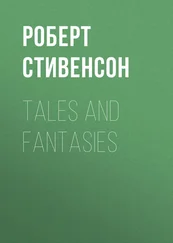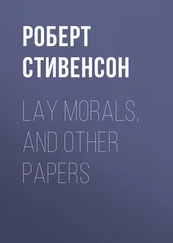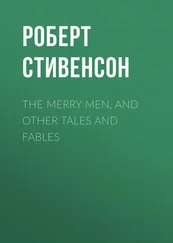Роберт Стивенсон - Familiar Studies of Men and Books
Здесь есть возможность читать онлайн «Роберт Стивенсон - Familiar Studies of Men and Books» — ознакомительный отрывок электронной книги совершенно бесплатно, а после прочтения отрывка купить полную версию. В некоторых случаях можно слушать аудио, скачать через торрент в формате fb2 и присутствует краткое содержание. Жанр: foreign_home, literature_19, на английском языке. Описание произведения, (предисловие) а так же отзывы посетителей доступны на портале библиотеки ЛибКат.
- Название:Familiar Studies of Men and Books
- Автор:
- Жанр:
- Год:неизвестен
- ISBN:нет данных
- Рейтинг книги:3 / 5. Голосов: 1
-
Избранное:Добавить в избранное
- Отзывы:
-
Ваша оценка:
- 60
- 1
- 2
- 3
- 4
- 5
Familiar Studies of Men and Books: краткое содержание, описание и аннотация
Предлагаем к чтению аннотацию, описание, краткое содержание или предисловие (зависит от того, что написал сам автор книги «Familiar Studies of Men and Books»). Если вы не нашли необходимую информацию о книге — напишите в комментариях, мы постараемся отыскать её.
Familiar Studies of Men and Books — читать онлайн ознакомительный отрывок
Ниже представлен текст книги, разбитый по страницам. Система сохранения места последней прочитанной страницы, позволяет с удобством читать онлайн бесплатно книгу «Familiar Studies of Men and Books», без необходимости каждый раз заново искать на чём Вы остановились. Поставьте закладку, и сможете в любой момент перейти на страницу, на которой закончили чтение.
Интервал:
Закладка:
The moral end that the author had before him in the conception of Notre Dame de Paris was (he tells us) to “denounce” the external fatality that hangs over men in the form of foolish and inflexible superstition. To speak plainly, this moral purpose seems to have mighty little to do with the artistic conception; moreover it is very questionably handled, while the artistic conception is developed with the most consummate success. Old Paris lives for us with newness of life: we have ever before our eyes the city cut into three by the two arms of the river, the boat-shaped island “moored” by five bridges to the different shores, and the two unequal towns on either hand. We forget all that enumeration of palaces and churches and convents which occupies so many pages of admirable description, and the thoughtless reader might be inclined to conclude from this, that they were pages thrown away; but this is not so: we forget, indeed, the details, as we forget or do not see the different layers of paint on a completed picture; but the thing desired has been accomplished, and we carry away with us a sense of the “Gothic profile” of the city, of the “surprising forest of pinnacles and towers and belfries,” and we know not what of rich and intricate and quaint. And throughout, Notre Dame has been held up over Paris by a height far greater than that of its twin towers: the Cathedral is present to us from the first page to the last; the title has given us the clue, and already in the Palace of Justice the story begins to attach itself to that central building by character after character. It is purely an effect of mirage; Notre Dame does not, in reality, thus dominate and stand out above the city; and any one who should visit it, in the spirit of the Scott-tourists to Edinburgh or the Trossachs, would be almost offended at finding nothing more than this old church thrust away into a corner. It is purely an effect of mirage, as we say; but it is an effect that permeates and possesses the whole book with astonishing consistency and strength. And then, Hugo has peopled this Gothic city, and, above all, this Gothic church, with a race of men even more distinctly Gothic than their surroundings. We know this generation already: we have seen them clustered about the worn capitals of pillars, or craning forth over the church-leads with the open mouths of gargoyles. About them all there is that sort of stiff quaint unreality, that conjunction of the grotesque, and even of a certain bourgeois snugness, with passionate contortion and horror, that is so characteristic of Gothic art. Esmeralda is somewhat an exception; she and the goat traverse the story like two children who have wandered in a dream. The finest moment of the book is when these two share with the two other leading characters, Dom Claude and Quasimodo, the chill shelter of the old cathedral. It is here that we touch most intimately the generative artistic idea of the romance: are they not all four taken out of some quaint moulding, illustrative of the Beatitudes, or the Ten Commandments, or the seven deadly sins? What is Quasimodo but an animated gargoyle? What is the whole book but the reanimation of Gothic art?
It is curious that in this, the earliest of the five great romances, there should be so little of that extravagance that latterly we have come almost to identify with the author’s manner. Yet even here we are distressed by words, thoughts, and incidents that defy belief and alienate the sympathies. The scene of the in pace , for example, in spite of its strength, verges dangerously on the province of the penny novelist. I do not believe that Quasimodo rode upon the bell; I should as soon imagine that he swung by the clapper. And again the following two sentences, out of an otherwise admirable chapter, surely surpass what it has ever entered into the heart of any other man to imagine (vol. ii. p. 180): “Il souffrait tant que par instants il s’arrachait des poignées de cheveux, pour voir s’ils ne blanchissaient pas .” And, p. 181: “Ses pensées étaient si insupportables qu’il prenait sa tête à deux mains et tâchait de l’arracher de ses épaules pour la briser sur le pavé .”
One other fault, before we pass on. In spite of the horror and misery that pervade all of his later work, there is in it much less of actual melodrama than here, and rarely, I should say never, that sort of brutality, that useless insufferable violence to the feelings, which is the last distinction between melodrama and true tragedy. Now, in Notre Dame , the whole story of Esmeralda’s passion for the worthless archer is unpleasant enough; but when she betrays herself in her last hiding-place, herself and her wretched mother, by calling out to this sordid hero who has long since forgotten her – well, that is just one of those things that readers will not forgive; they do not like it, and they are quite right; life is hard enough for poor mortals, without having it indefinitely embittered for them by bad art.
We look in vain for any similar blemish in Les Misérables . Here, on the other hand, there is perhaps the nearest approach to literary restraint that Hugo has ever made: there is here certainly the ripest and most easy development of his powers. It is the moral intention of this great novel to awaken us a little, if it may be – for such awakenings are unpleasant – to the great cost of this society that we enjoy and profit by, to the labour and sweat of those who support the litter, civilisation, in which we ourselves are so smoothly carried forward. People are all glad to shut their eyes; and it gives them a very simple pleasure when they can forget that our laws commit a million individual injustices, to be once roughly just in the general; that the bread that we eat, and the quiet of the family, and all that embellishes life and makes it worth having, have to be purchased by death – by the deaths of animals, and the deaths of men wearied out with labour, and the deaths of those criminals called tyrants and revolutionaries, and the deaths of those revolutionaries called criminals. It is to something of all this that Victor Hugo wishes to open men’s eyes in Les Misérables ; and this moral lesson is worked out in masterly coincidence with the artistic effect. The deadly weight of civilisation to those who are below presses sensibly on our shoulders as we read. A sort of mocking indignation grows upon us as we find Society rejecting, again and again, the services of the most serviceable; setting Jean Valjean to pick oakum, casting Galileo into prison, even crucifying Christ. There is a haunting and horrible sense of insecurity about the book. The terror we thus feel is a terror for the machinery of law, that we can hear tearing, in the dark, good and bad between its formidable wheels with the iron stolidity of all machinery, human or divine. This terror incarnates itself sometimes and leaps horribly out upon us; as when the crouching mendicant looks up, and Jean Valjean, in the light of the street lamp, recognises the face of the detective; as when the lantern of the patrol flashes suddenly through the darkness of the sewer; or as when the fugitive comes forth at last at evening, by the quiet riverside, and finds the police there also, waiting stolidly for vice and stolidly satisfied to take virtue instead. The whole book is full of oppression, and full of prejudice, which is the great cause of oppression. We have the prejudices of M. Gillenormand, the prejudices of Marius, the prejudices in revolt that defend the barricade, and the throned prejudices that carry it by storm. And then we have the admirable but ill-written character of Javert, the man who had made a religion of the police, and would not survive the moment when he learned that there was another truth outside the truth of laws; a just creation, over which the reader will do well to ponder.
Читать дальшеИнтервал:
Закладка:
Похожие книги на «Familiar Studies of Men and Books»
Представляем Вашему вниманию похожие книги на «Familiar Studies of Men and Books» списком для выбора. Мы отобрали схожую по названию и смыслу литературу в надежде предоставить читателям больше вариантов отыскать новые, интересные, ещё непрочитанные произведения.
Обсуждение, отзывы о книге «Familiar Studies of Men and Books» и просто собственные мнения читателей. Оставьте ваши комментарии, напишите, что Вы думаете о произведении, его смысле или главных героях. Укажите что конкретно понравилось, а что нет, и почему Вы так считаете.












